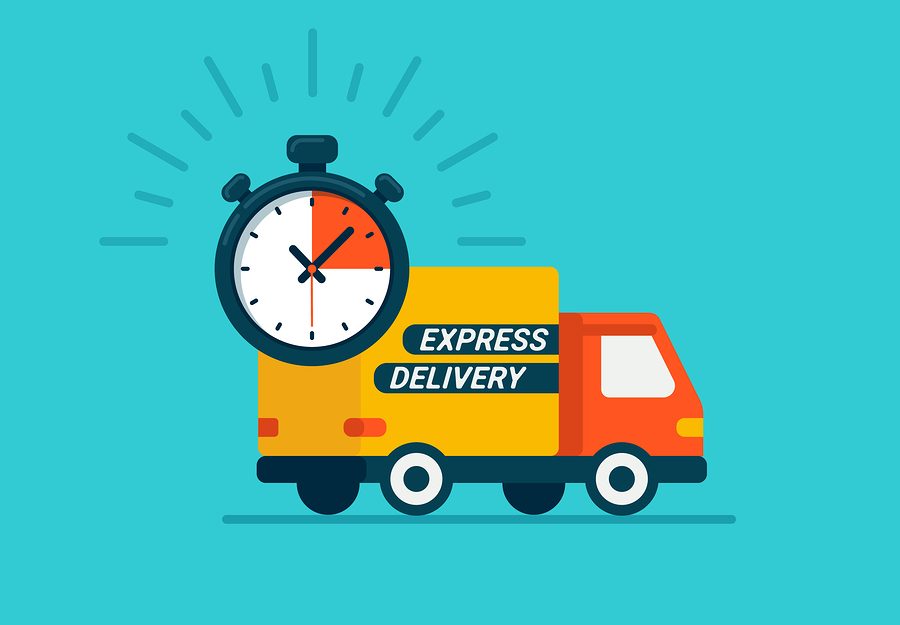The 4 Factors for Time-Critical Deliveries
We may live in the era of free two-day shipping, but the actual logistics of expectations like that come with more than a few physical challenges. Extreme weather, traffic, the electronic logging device (ELD) mandate, and a truck driver shortage are just some of the challenges you have to overcome in your supply chain to meet high customer expectations under shrinking timelines.
Sure, your customers don’t expect two-day shipping on massive orders, but it’s important to remember short delivery times are a regular and accessible part of everyday life. So how do you build a supply chain to accommodate these time-critical deliveries?

1. Design your supply chain to accommodate time-critical deliveries at high volume.
Sure, you most likely already have a time-critical delivery option in your offerings. It’s called expedited shipping. But there are two extremely negative connotations associated with expedited shipping: It’s expensive, and it’s only necessary when something goes wrong.
But it doesn’t have to be as expensive or the result of poor planning or emergencies. Many industries — including pharmaceuticals, automotive, and electronics — need time-critical deliveries to protect their products or keep assembly lines open. Take a good look at your supply chain and see if you can accommodate multiple time-critical deliveries. If it’s not a possibility now, start taking steps toward redesigning your supply chain to allow for a high volume of time-critical deliveries.
Not sure where to start? Assess and analyze your current data to find ways to improve your paperwork process, create better forecasting, eliminate unnecessary communication, and respect your drivers’ hours of service.

2. Build compliance into your supply chain strategy.
Governmental organizations in the United States and beyond are always adjusting their regulations on how shippers need to weigh goods, communicate, and more. Instead of jumping through hoops on the back end of your shipments to ensure compliance, make compliance a part of your everyday operations. When regulations change, adjust where necessary to ensure compliance. Working to avoid any surprise delays over noncompliance can help keep everything running smoothly.

3. Go beyond traditional tracking.
If you’re building compliance into your supply chain, chances are traditional tracking isn’t going to cut it. The ELD mandate, for example, requires shippers to be able to locate any load on U.S. roadways in a matter of seconds. Since that information goes back to your transportation management system (TMS), why not put it to work? Help improve your customers’ experiences by providing updates on the statuses of their shipments. Leveraging digital tools can enable you to track products easier and gain better visibility.

4. Automate to scale.
Reducing costs and building sustainability can be a huge challenge, especially for time-critical supply chains. That’s where automation comes in. If you can automate a logistics process, consider testing it in your supply chain to free up human minds and hands for more mission-critical work. If it works for your business, it could mean more precise outcomes.
What you risk when your supply chain isn’t time-critical
Unlike a package sent via two-day free shipping arriving late, being late with a delivery isn’t just a mild annoyance to your customers. Tardiness can damage your relationship with that customer and potentially strain future relationships with those who may have heard about that one experience.
Think about it this way: A company’s experience with your business may make or break a new venture with a potential client. If your reputation with one particular customer suffers, that customer’s future interactions with its connections could sour. By taking steps to ensure a time-critical supply chain with high capacity, you can reduce the risk of leaving customers with poor experiences. Better yet, you’ll more likely leave them with glowing recommendations of your service.
[cta]For more information on how to put LynnCo solutions to work for your business, contact your Solutions Strategist, Jeanette Sefers, at Jeanette.Sefers@lynnco-scs.com.[/cta]
